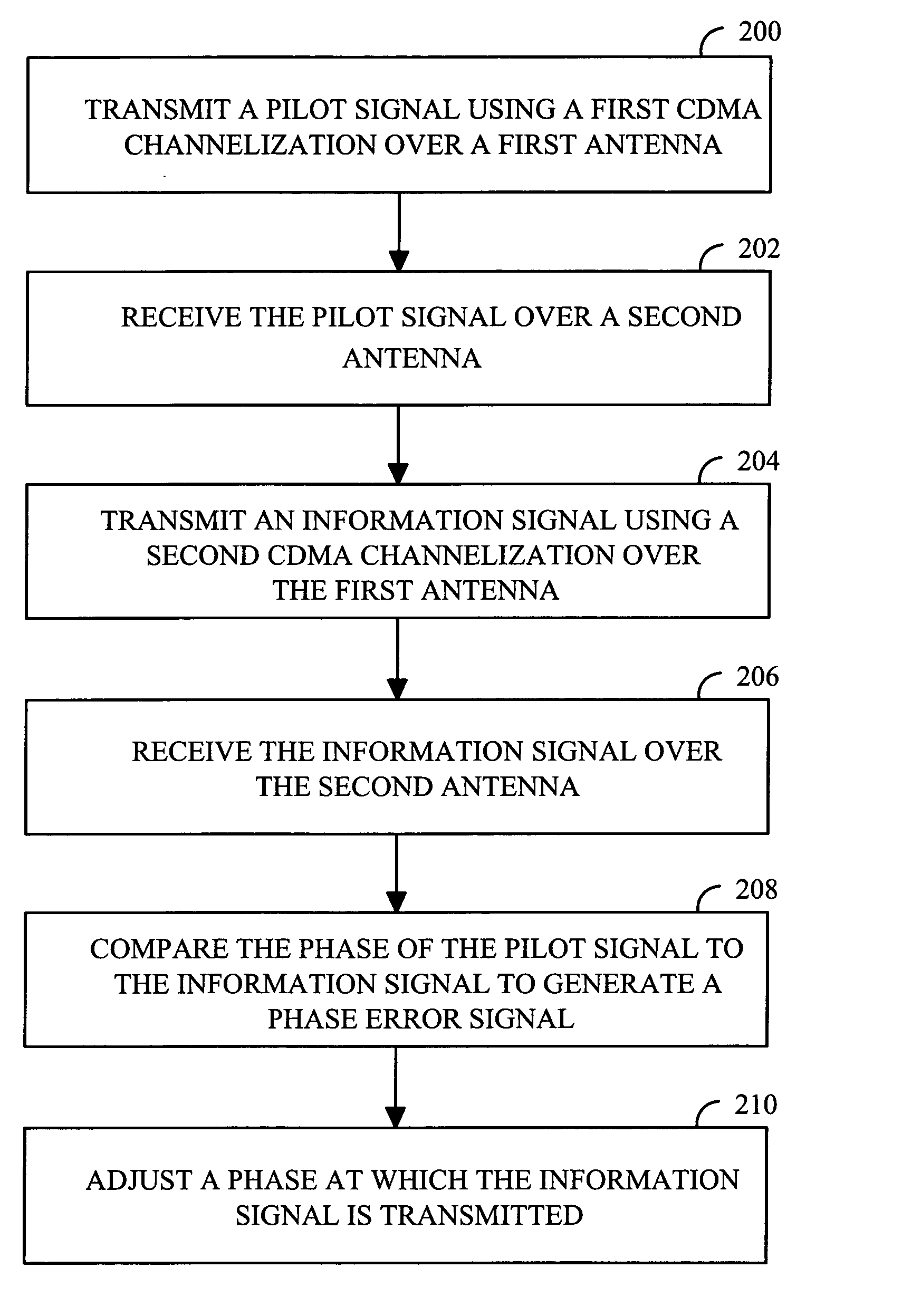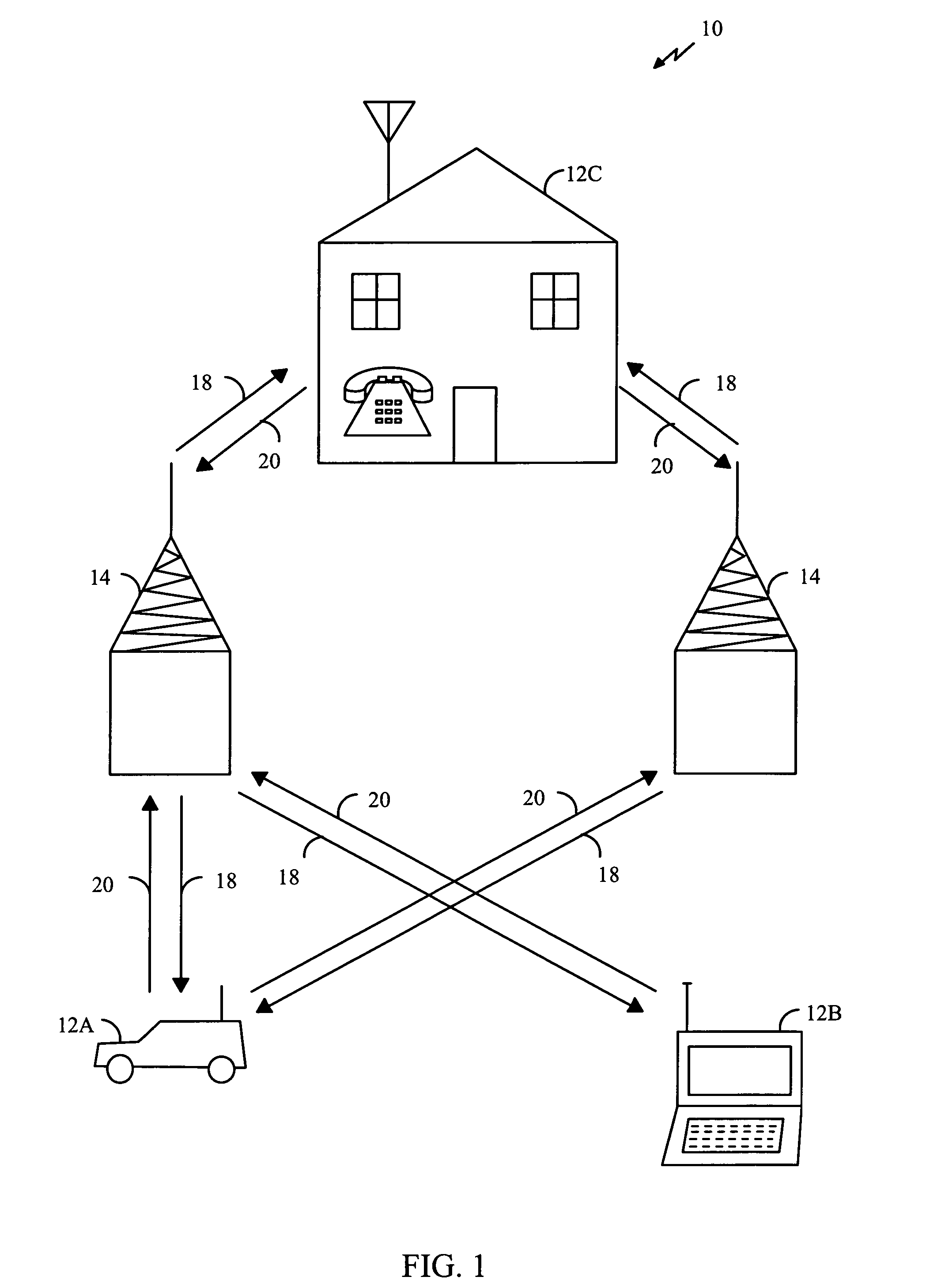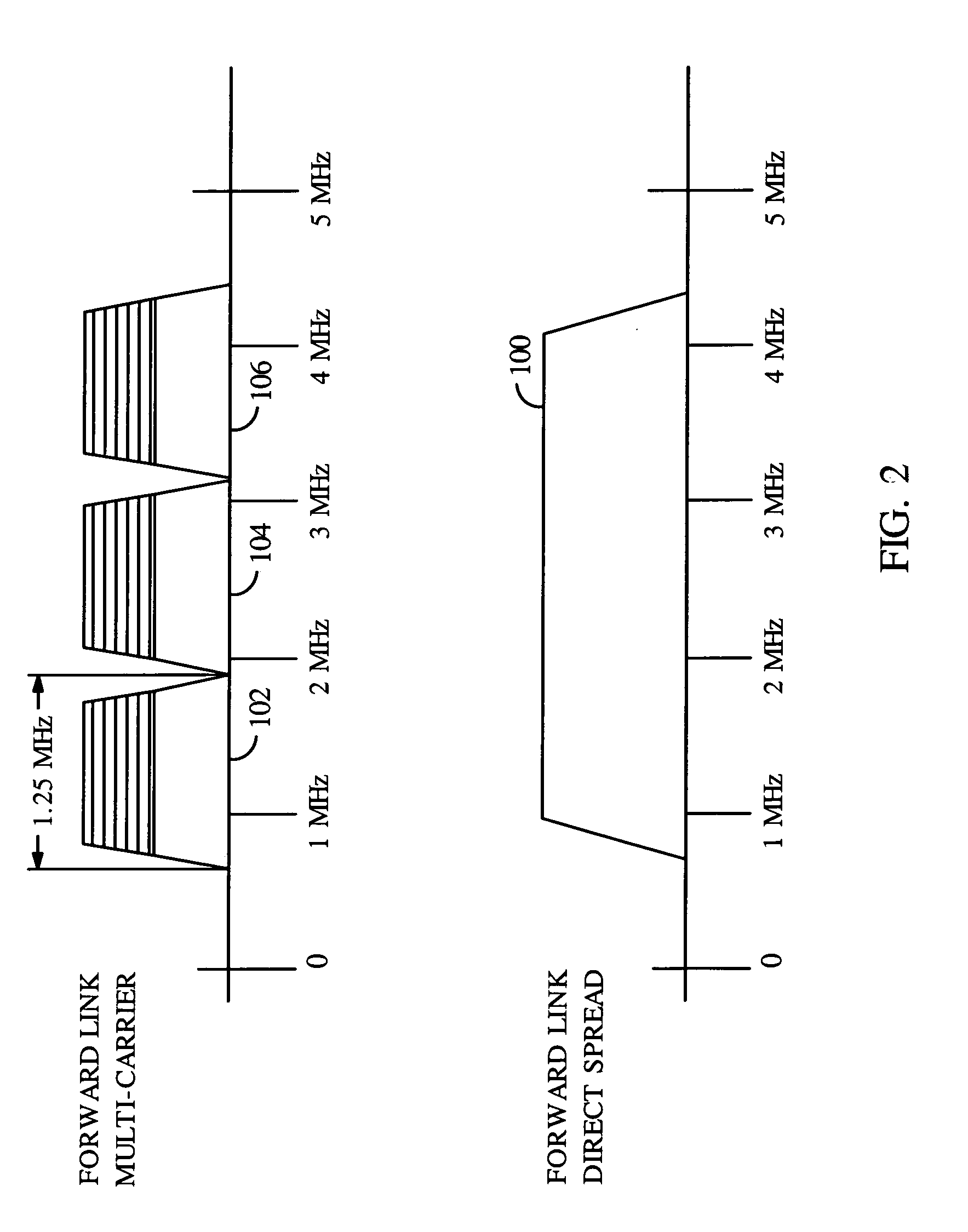Method and apparatus for overlaying two CDMA systems on the same frequency bandwidth
a technology of cdma and overlaying, applied in the field of communication systems, can solve the problems of significant interference between transmissions, degraded orthogonal nature of codes, and potentially unstable system behavior, and achieve the effect of reducing timing differences
- Summary
- Abstract
- Description
- Claims
- Application Information
AI Technical Summary
Benefits of technology
Problems solved by technology
Method used
Image
Examples
Embodiment Construction
[0033] When a third generation, broadband, code divisional multiple access (CDMA) system is deployed in a service area previously providing an earlier generation of a CDMA system, it is often advantageous to overlay the operating spectrum of the broadband system with the existing system. For example, a cdma2000 system using an 1× mode spreading rate of 1.2288 Mcps (a bandwidth of approximately 1.25 MHz) can be overlaid in an older generation IS-95 system which also uses a spreading rate of 1.2288 Mcps (a bandwidth of approximately 1.25 MHz). The cdma2000 system also has a 3× mode which uses a spreading rate of 3×1.2288 Mcps (a bandwidth of approximately 3.75 MHz). One of the cdma2000 3× modes has a multicarrier forward link which can overlay an older generation IS-95 system or a cdma2000 1× system.
[0034]FIG. 2 is a spectral plot showing the spectral characteristics of the forward links for the cdma2000 system and the IS-95 system. Spectrum 100 represents one channel of the cdma2000...
PUM
 Login to View More
Login to View More Abstract
Description
Claims
Application Information
 Login to View More
Login to View More - R&D
- Intellectual Property
- Life Sciences
- Materials
- Tech Scout
- Unparalleled Data Quality
- Higher Quality Content
- 60% Fewer Hallucinations
Browse by: Latest US Patents, China's latest patents, Technical Efficacy Thesaurus, Application Domain, Technology Topic, Popular Technical Reports.
© 2025 PatSnap. All rights reserved.Legal|Privacy policy|Modern Slavery Act Transparency Statement|Sitemap|About US| Contact US: help@patsnap.com



